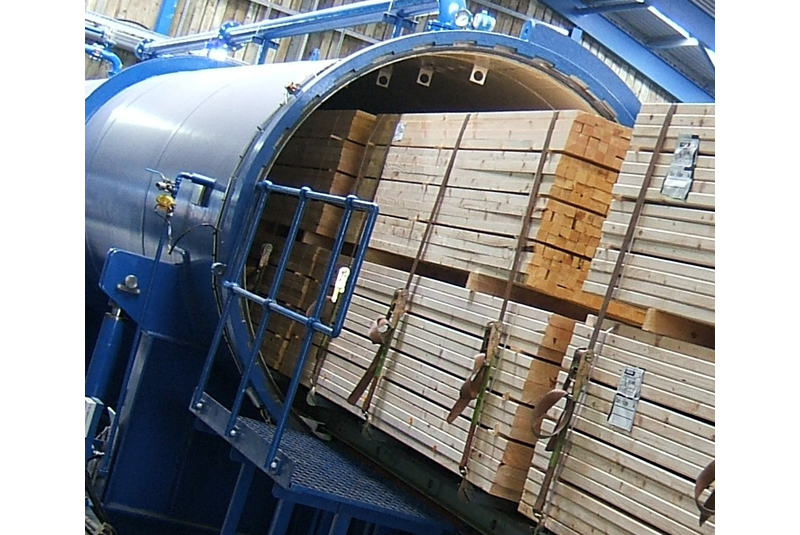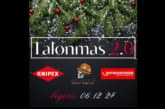
‘Treated timber’ is a term that implies much yet means little without context. The Timber Trade Federation is starting a campaign to provide clarity and education to reduce risks for merchants and builders, PBM discovers.
For builders’ merchants, the key to successfully selling preservative-treated wood is not to assume that all ‘treated timber’ is equal. Indeed, the very term ‘treated timber’ is vague, the Federation says. To avoid the risk of products failing in use, merchants should equip all timber-related staff, from purchasing to the trade counter, with a greater understanding of which class of wood treatment applies to products for different situations.
Each construction situation has a Use Class number, from 1-4, which indicates the level of preservative necessary for timber being used for specific purposes inside or outside, as Mark Bowers, Commercial Director at Donaldson Timber, explains: “Carcassing for internal use within a building should receive treatment appropriate to Use Class 2. That means it can be used in situations where it is hardly ever exposed to moisture. But timber that comes into contact with the ground must be treated to meet Use Class 4. Don’t just take the builder’s word that ‘treated timber’ is what they need: ask where that ‘treated timber’ is to be used.”
Arbor Forest Products is one of the TTF members participating in the Federation’s treatments review to help improve understanding of timber treatments. Jason Ostler, AFP’s Managing Director, highlights the need for greater awareness especially in the summer selling season: “At this time of year, merchants are selling lots of fence posts. They’re an easy way to demonstrate the need for Use Class 4 timber treatment: fence posts are in permanent contact with the ground and therefore require a higher level of preservative treatment. What else constitutes being in ‘ground contact’ is where the confusion sometimes occurs, as with deck joists for example.”
And Gordon Ewbank, Technical Director of the Wood Protection Association (WPA), concurs, stating decking joist treatments need clarity: “A joist used for internal work, such as a floor joist, will be treated to Use Class 1 or 2. A joist used under external decking should be treated for at least Use Class 3, but preferably for Use Class 4. This is because contact with autumn leaves, moss, weeds etc. may effectively create soil and moisture around the decking joist.
“Merchants should cover themselves by advising only that timber treated for Use Class 4 is suitable as decking joists. There are modest cost implications to the higher level of treatment, but losing your reputation over timber that’s failed and possibly caused personal injury could be much more costly.”
Improving communication with merchants is said to be one of the key aims of the Timber Trade Federation’s review, being led by Federation President Charles Hopping. Charles explains the reasons behind the campaign and the actions now underway: “The emphasis in timber treatments today is on balancing best service life with least environmental impact. This has made the specification of treated timber more complicated for wood users and companies in the supply chain.
“To address this issue, the TTF has begun a process to make it much easier for wood users and our industry’s customers in the merchant sector to get the right treated wood for the intended purpose.”
He adds: “We will be explaining in clear language what users need to do to get the right kind of wood treatment for the end use, for example Use Class 2 treatment for internal timbers, Use Class 3 for external timbers used above ground, or Use Class 4 for external timbers used on or in the ground.”
Among the treatment producers in TTF membership is Lonza Wood Protection. Marketing Director Andy Hodge also agrees with the TTF’s approach, that education needs to stretch from end to end along the supply chain. Andy comments: “We have always recognised the need for repeatable, quality training for treatment plant operators using our preservative products. Three years ago we set up our online Treat-Right training programme. Plant operators are given a password and log-in and, at their own pace, are able to take various training modules equipping them with the necessary knowledge to provide market relevant preservative treated timbers.”
Andy continues: “These modules cover essential wood science topics related to treatments, such as recognising the difference in UK timber species, treating to particular Use Classes, the importance of moisture content in preparation for treatment and the relevance of the sapwood and heartwood content of machined timbers. We are now finding that timber sales teams of merchant customers also want to use the training, to help understand the basics of preservative-treated timbers within their businesses.”
WPA’s Gordon adds that merchants should be active in asking questions of both suppliers and customers. He confirms: “Builders’ merchants should initiate the conversation with builders over the end use of wood, and offer wood treated to the right level for the specific purpose. You can also ask your supplier to verify — on the invoice, the delivery note, or both — that the wood meets your specification.”
TTF President Charles concludes by outlining the specific actions anticipated as the Federation’s campaign moves forward: “We are working with treatment suppliers’ organisations to help TTF members to demonstrate that what they supply will do what it’s supposed to do. We will be encouraging our members to mark packs and invoices in plain English with what their treated materials are suitable for. And in the future we will be strongly encouraging all our members to participate in an assurance scheme and the training and education that goes with it, and will promote that scheme downstream throughout the supply chain.”
For more information on The Timber Trade Federation and its latest campaign, click here.









